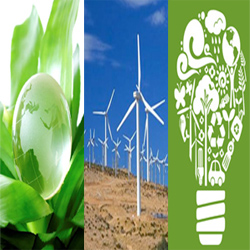VN moves towards green growth
VGP – Việt Nam is on the path to shifting its growth model to a green one to realize its goal of restructuring the economy toward being more efficient, competent as well as being capable of cutting greenhouse emission and responding to climate change.
|
|
|
Illustraton photo |
Statistics show that Vietnamese enterprises have consumed the amount of energy, which come mainly from fossil fuel, to a level that is 1.3-1.5 times higher than Thailand and two times higher than Malaysia.
The country’s total greenhouse gas emissions in 2000 were equal to 150 million tones of carbon dioxide. Although the country’s emission level per capita remains low compared to other developing countries, it has sharply increased in recent years.
When natural resources cannot last long and the country is predicted to be one of the most vulnerable to climate change and sea level rise in the world, there is other way for Vietnam but to turn to a green growth to ensure its sustainable development.
Earlier, the Ministry of Planning and Investment submitted a new green growth strategy for 2011-2020 with a vision towards 2050. The document is expected to be ratified by the Prime Minister this April.
The new model is based on low carbon emissions, green production and consumption.
Environmental friendly lifestyle and production is, therefore, encouraged, carbon emissions are needed to reduce, climate change adaptation should be promoted, and a modern infrastructure is needed.
Localities are required to focus on efficienly using both human and natural resources; restructuring agricultural production in a more environmental friendly way; developing sources of renewable energy and encouraging businesses to transfer technology to improve production effectiveness.
Under the new strategy, Việt Nam will strive for a two-fold increase in GDP against 2010 while reducing energy consumption rate to 2-3% and green house gas emissions to 10-15% by 2020.
By Kim Loan

